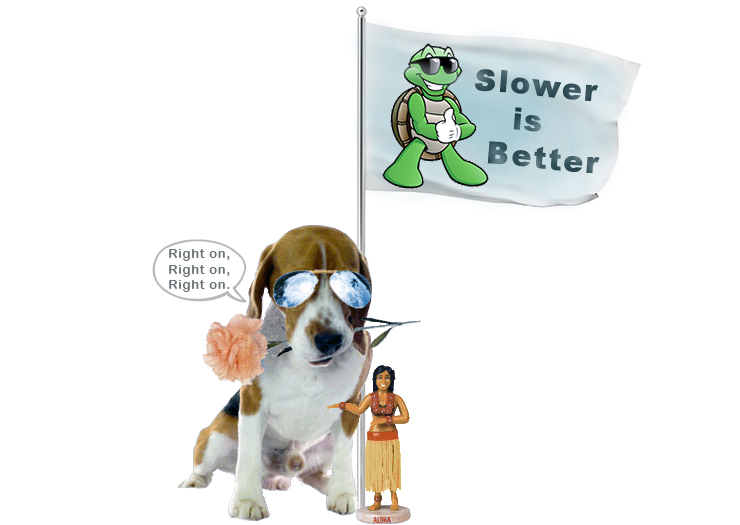We eat food every day and we drive cars every day. But food purchases happen on a short purchase cycle and car purchases happen on a longer one.
How often does the average citizen purchase the product or service you sell?
The purchase cycle of your product determines how quickly your ads will start working.
Food and entertainment have short purchase cycles. This is why ads selling food and entertainment can generate big results quickly, even when the advertiser is new and unknown.
But to make things happen on a long purchase cycle, you must become the company customers think of immediately and feel the best about.
Air conditioning systems and engagement rings have long purchase cycles.
I’ve learned not to discuss purchase cycles in public forums because at least one marketer will immediately get red-faced and say, “But people buy air conditioning systems and engagement rings every day. My advertising is aimed at the people who are in the market for those products right now.”
This is their logic: “When a person is ready to buy a product, they’re going to go online and do some research. This is the zero moment of truth. Show up BIG in that moment and you will dominate your product category.”
I agree that people are going to go online. Google is the new phone book and social media allows us to hear from customers who have already purchased the product. But it is foolish to believe that customers enter this “zero moment of truth” without prejudices, preferences, and predispositions.
330 million Americans will purchase 2 million engagement rings this year. This means that 1 American in 165 will buy an engagement ring.
But a year has 365 days.
This means that just 1 American in 60,225 will purchase an engagement ring today.
In a long purchase cycle, you must win the hearts of tomorrow’s customers with a memorable message – relentlessly repeated – and then wait for them to need what you sell.
Use the seductive repetition of extremely cheap advertising to reach tomorrow’s customers along with all their influencers. Purchased wisely, mass media can reach the same individual 3 times each week, 52 weeks a year, for about 40 cents.
156 repetitions of a 60-second ad will be heard by that individual this year.
Did you hear the part about the 40 cents?
$40,000 a year gives you top-of-mind awareness with about 100,000 people.
Calculate the percentage of the public you can afford to reach, never forgetting that three-times-a-week repetition is essential if you want to become a household word. Don’t reach 100% of your city and convince them 10% of the way. Reach 10% of your city and convince them 100% of the way.
Advertise the why. Wait for the when.
The longer you do this, the better it works.
You’ll gain momentum, year after year.
Your online conversion rates will skyrocket.
Your online costs of marketing will plummet.
You’ll deepen your relationship with customers, year after year.
They will develop a strong predisposition toward you.
They will feel like they know you.
They will consider you an ally and a friend.
Marketers who subscribe to Google’s theory of the “zero moment of truth” are sprinters. They believe in waiting until the customer is actively, consciously, currently in the market for the product. Sprinters make decisions on a short time horizon. I think of them as “twitchy little bastards.”
If your category has a long purchase cycle, I suggest that you embrace the inevitable time horizon.
Become a long-distance runner.
Fly the flag of Team Tortoise.
Roy H. Williams
 Are you ready to discover your “genuine self?” Gina Gardiner was the principal of a school in England when she had a serious ski accident that resulted in two spinal surgeries, both of which failed. Gina had to learn to walk again, not once, but twice. Today Gina is a motivation coach leading a group of international followers to greater happiness, success, and fulfillment. Join roving reporter Rotbart in Colchester, England as he learns from Gina Gardiner how to discover his “genuine self.” It’s always rock-and-roll at MondayMorningRadio.com
Are you ready to discover your “genuine self?” Gina Gardiner was the principal of a school in England when she had a serious ski accident that resulted in two spinal surgeries, both of which failed. Gina had to learn to walk again, not once, but twice. Today Gina is a motivation coach leading a group of international followers to greater happiness, success, and fulfillment. Join roving reporter Rotbart in Colchester, England as he learns from Gina Gardiner how to discover his “genuine self.” It’s always rock-and-roll at MondayMorningRadio.com
